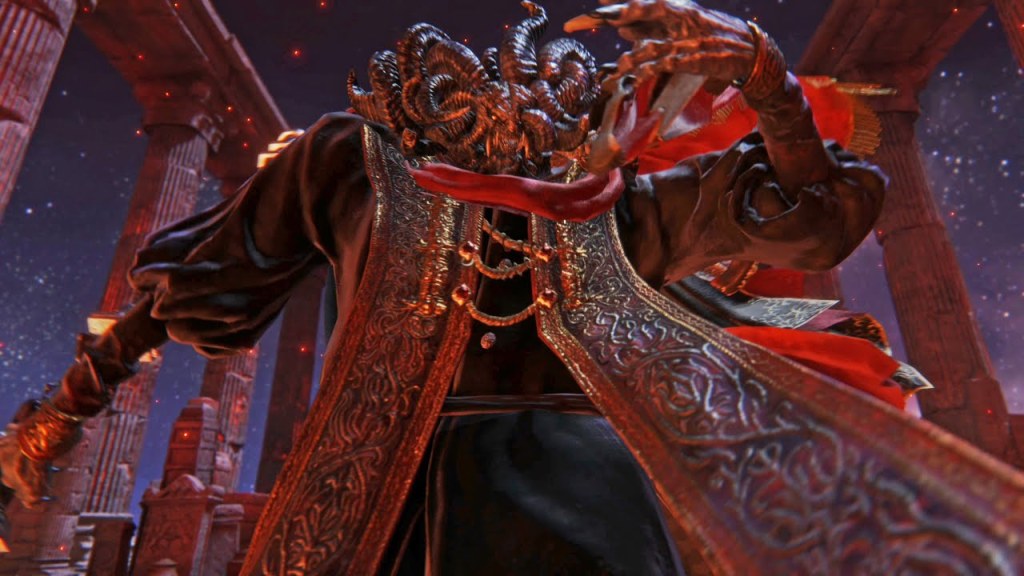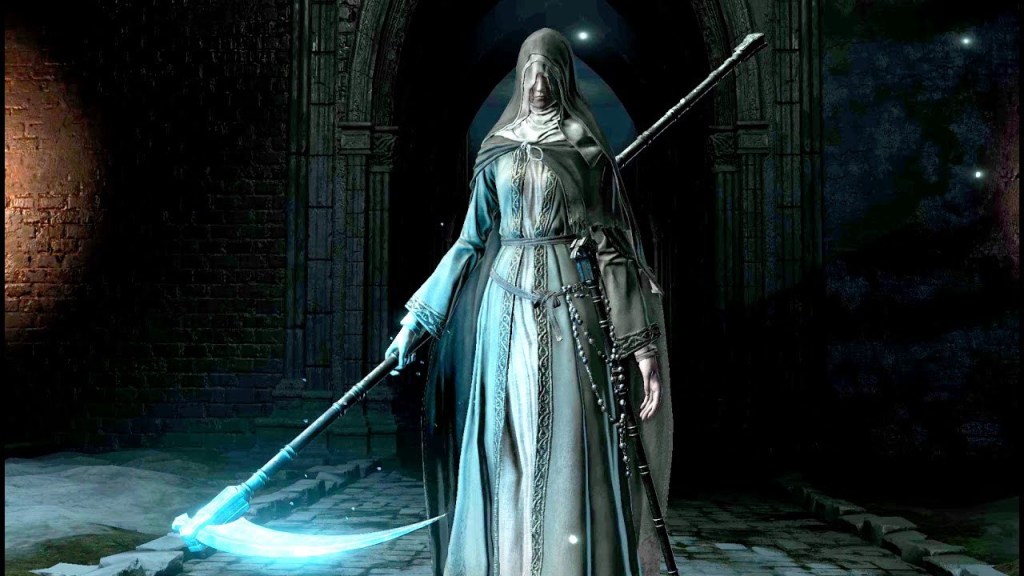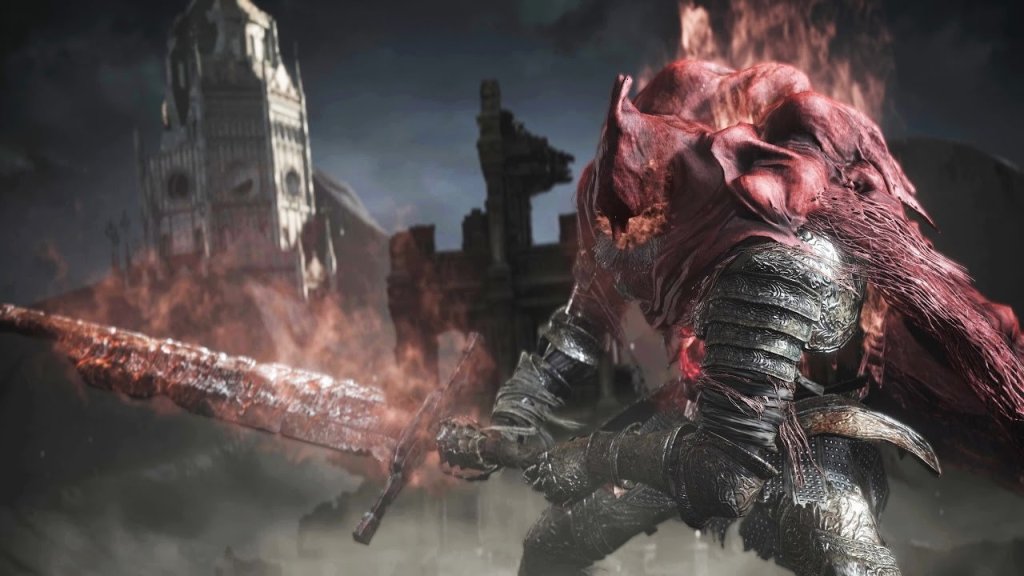From Software has had a rich, long history in gaming dating back to the early 2000s. Their main niche on the gaming market has been their ability to consistently develop incredibly challenging video games which are far harder to beat than their contemporaries. This niche had held up into the early 2020s and continued with the recent release of the masterpiece “Elden Ring”.
Today’s piece aims to analyze From Software’s ten hardest boss fights which, not by accident, have also manifested into some of their most memorable. The list will begin with the easiest at 10 and will get narrowed down into their absolute hardest at 1.

10. Mohg, Lord of Blood (Elden Ring)
Mohg is definitely the most vile, evil, generally heinous character in Elden Ring, and possibly in From Software games as a whole, so the fact that he makes for a very challenging fight is perfectly thematically fitting. This was enough to secure him a favorable positioning on our boss rankings list
As his title would suggest, Mohg mainly utilizes spells and attacks which have the potential to inflict heavy Bleed damage onto the player. As you’d expect, he is also greatly resistant to this very same element, which the player has likely been leaning on to this point.
The key part of Mohg’s fight which makes it very difficult to outlast comes from when he transitions to his second phase. When doing so, Mohg will, in a hushed voice, chant a foreign command whereupon the battlefield is surrounded by a large, sinister crimson orb. They will immediately suffer three Blood Loss events back to back to back which is a guaranteed kill from full health, meaning the player must have conserved at least a handful of healing flasks in order to survive the barrage and then continue the fight after.
Mohg’s high amount of hit points make this fight out to be both a test of attrition and overall damage output, making him an easy pick for this list.

9. Dragonslayer Ornstein and Executioner Smough (Dark Souls 1)
Heading back towards our adventure into Lordran, we revisit an all time classic. Ornstein and Smough are vastly different characters, the former being agile and aggressive, the latter being slow but tanky and wielding an immensely powerful great hammer. As such, fending off Ornstein while making sure to keep your distance from Smough, or trying to stave off Ornstein while taking advantage of Smough’s sluggishness proves immensely difficult. When one of them is killed, the other will absorb and inherit their power and become much more dangerous, making for a challenging second phase.
Really, the only reason this fight is at #9 and isn’t higher is because utilizing a summon, mainly a fellow player, does serve to make it less challenging since they could get Ornstein or Smough’s attention and give you a clear one-on-one with the other. However, fought solo, this fight can be a nightmare, making it clearly deserving a spot on the list.

8. Beast Clergyman/Maliketh the Black Blade (Elden Ring)
This two-phase fight does a great job at stressing both the player’s resources as well as their reaction speed. The Beast Clergyman isn’t too, too imposing, but when he turns into Maliketh is when the heat really gets turned up. Maliketh is extremely fast, zooming across the map and scarcely ever stopping for more than a moment or two. Moreover, when he does strike the player, it leaves behind a nasty damage-over-time which will greatly annoy even greatshield users, which could otherwise easily shrug off his assaults. His relentless speed means slow hitting attacks, such as spells with large animations or colossal weapons, simply aren’t effective which will force users of these maneuvers to change their strategies. Because of this, Maliketh definitely belongs on this list.

7. Sister Friede and Father Ariandel (Dark Souls 3)
This fight was unique for being the first time From Software designed a boss with three separate phases to it. As you’d expect, that makes this fight quite long and forces the player to be very tactical on using their limited resources. Friede herself is difficult to tackle, inflicting heavy frostbite damage into the player, periodically turning invisible and difficult to see, and being greatly agile with frequent attempts at a hit-and-run play style. In addition to this fight being difficult, it’s got more than just challenge to it, as it appeared in the top ten on our boss ranking list.
During the second phase, Father Ariandel springs into action. Here, we see a similar dynamic to the Ornstein and Smough dilemma, where the player must try to contend with the speedy, aggressive Friede as well as the large and powerful Ariandel. After they’re defeated, however, Friede will rise again one last time in her extremely imposing Blackflame form, more aggressive and threatening than the previous two phases of the fight. Only by defeating Blackflame Friede can the player finally claim victory.
It is truly a long winded, mechanically demanding fight that absolutely belongs on this list. The only reason it isn’t higher is due to Friede’s susceptibility to being staggered, backstabbed and, similarly to Ornstein and Smough, the notion that this fight becomes significantly easier when tackled with a friend.

6. Black Dragon Kalameet (Dark Souls 1)
The thematically younger cousin of Darkeater Midir, Kalameet was unique in Dark Souls 1 for having an adaptive AI, allowing him to intelligently react to what the player is doing instead of fall into a predictable, exploitable pattern. Moreover, unlike most other bosses, Kalameet can credibly threaten major damage in just about any of his attacks, as opposed to other bosses which had a slight tendency to be one-trick ponies with either a single move or combo that could threaten a kill. Kalameet definitely isn’t on Midir’s level, as Midir’s arsenal of moves simply offers much more than Kalameet. However, even being a watered down Midir, Kalameet is still an immense challenge for a game in Dark Souls 1 where movement was clunkier and the player had less options in general than in Dark Souls 3 where Midir can be fought. As such, the difficulty level isn’t that far of a drop off and Kalameet is an easy pick for this list.

5. Defiled Chalice Dungeon Amygdala (Bloodborne)
To be clear, this specifically refers to the Amygdala when fought inside the Defiled Chalice Dungeon, not the Amygdala found elsewhere in the game.
Within the Defiled Chalice Dungeon, the player’s HP is cut in half. While the damage they take is similarly reduced, elemental damage remains untouched. As a result, strong elemental attacks have a probability of straight up killing in one hit.
Both of these aspects make the Amygdala here a major problem. Like the player, the Amygdala here takes much less damage from all non elemental sources. Unlike the player, the Amygdala’s HP remains untouched. It also has one attack which deals fire damage that will absolutely kill in one hit that it loves to use repeatedly throughout the fight. Players are basically pigeon holed into using elemental attacks of their own, and unless you’re using an Arcane build, this will force you out of your comfort zone immensely, causing this boss fight to be incredibly challenging.

4. Slave Knight Gael (Dark Souls 3)
Like Friede and Ariandel, Gael’s boss fight has three separate phases to it and is therefore a very long battle. Gael, however, fights by himself, fights outdoors where there is much more room to move and his difficulty isn’t significantly reduced by having a friend along to help. He also doesn’t stagger easily, doesn’t have a susceptibility to being backstabbed and is somehow even faster and more aggressive than Friede is, while generally hitting harder than Friede as well. Additionally, Gael received a particularly high spot on our boss ranking list.
Gael has an enormous arsenal at his disposal consisting of fast melee attacks, fast ranged melee attacks, ranged magic attacks, a fully automatic crossbow and a small selection of slow but lethal close-ranged explosive attacks. That’s a lot the player has to account for, and he rarely gives more than a moment’s notice before using any of these maneuvers. As such, Gael is a fitting last boss for Dark Souls 3 and is an excellent send off to the Dark Souls franchise as a whole.

3. Orphan of Kos (Bloodborne)
Orphan of Kos harbors some similarities to Gael, though it trades away a large and varied kit of unique tools in exchange for hitting even harder, having more range and being faster. Things can be going well for the player, then they make one single mistake and die in two hits. The Orphan of Kos is immensely punishing towards panic rolls and overextending on attacks. It also doesn’t stagger at all and doesn’t have any weaknesses. Bloodborne is a game where shields were way, way, way less useful than other From Software games. As a result, the player is left to rely on keen reflexes to properly dodge Kos’ attacks, whereas they could lean on one of many strong great shields in other games to keep their assailant somewhat at bay. Overall, that’s the catalyst which places Kos as high as it is on this list. In addition to being difficult, the Orphan of Kos just cracked into our top ten on our boss rankings list.

2. Darkeater Midir (Dark Souls 3)
The king is dead, long live the king! With the release of Elden Ring, Midir’s status as From Software’s hardest overall boss was finally removed. However, the fight is still absolutely not a cakewalk. As well, Midir remains From Software’s best dragon boss overall by a fair margin. Midir boasts a unique, adaptive AI and will intelligently react to the player’s movements and attacks instead of leaning on predictable and exploitable movement and combat options. Much like Slave Knight Gael, Midir has a large variety of different attacks he can use to deal with the player. Midir also has a fairly simple, interesting but dangerous dynamic to fighting him- he takes far more damage from attacks to his head than anywhere else. However, almost all of his attacks are frontal assaults, meaning the player puts themselves in the line of fire trying to deal good damage. As he takes very little damage from attacks going anywhere else, taking this risk is often mandatory anyway.
Midir’s attacks are fast and hard hitting, so much so that even characters with large Vigor stats and heavy armor will likely be killed in, at most two and sometimes even just one hit. Because Midir is also very tanky, he has all the pieces to be a formidable boss, justifying his positioning on this list easily.
Honorable mentions:
- Radagon of the Golden Order/Elden Beast (Elden Ring)
- Ludwig the Accursed/Holy Blade (Bloodborne)
- Manus, Father of the Abyss (Dark Souls 1)
- Fume Knight (Dark Souls 2)
- Demon Prince (Dark Souls 3)
The hardest boss From Software has ever developed thus far would have to be:

1. Malenia, Blade of Miquella/Goddess of Rot (Elden Ring)
Anyone who read this article probably expected this positioning for Malenia. And that isn’t just shiny new toy syndrome talking- Malenia is the first boss From Software has ever developed who has actually been arguably overtuned, being made out to be a bit too unreasonably difficult at that.
Malenia has it all — two challenging phases, a speedy and aggressive boss with range, a signature move that can easily kill pretty much on the spot, and quite a lot of longevity to boot.
The Waterfowl Dance comes out rather fast, is very challenging to dodge, can’t be parried and will absolutely kill in one sequence. Moreover, the simple act of using the move is going to heal Malenia a lot, even if it fails to damage the player at all. Malenia in general will be healed every time she hits the player, so long as her sword even passes through them, even if it is deflected by a greatshield or a player is able to roll through it and avoid damage.
This is arguably what sets her over the top and makes her too challenging, as this forces the player to constantly deal a lot of damage to a boss which is flying all over the place and constantly swinging back at the player, regenerating health in the process. With Poison being weak and Malenia’s status as the Goddess of Rot naturally making Scarlet Rot an ineffective strategy, the player cannot rely on chipping away at her health with status effects. Even though she is susceptible to Bleed, she regenerates health so quickly that the player will need to be remarkably adept at applying this status to actually make meaningful progress. This has had a tendency to force players to either bring a friend along to help or strictly utilize Bleed weapons, as other weapons used when fighting her alone simply fails to keep up with her self-heal mechanic. Unfortunately, the player is inclined to be aggressive as to do enough damage to outdo her self heal. This has a tendency to get caught and killed by Waterfowl Dance, or even just one of Malenia’s generally hard hitting attacks which are definitely capable of killing in two or three hits on their own.
Malenia’s second phase, where her Scarlet Aeonia is cast, blooms and she turns into the Goddess of Rot, is funnily slightly easier to face than her first phase. It is still by no means even slightly easy, as she retains many of her first phase traits, including the self heal and Waterfowl Dance, being marginally slower and slightly easier to hit as a result.
It is difficult to imagine there being a harder boss fight in all of video gaming than Malenia, but other From Software bosses don’t hold up to her at all. As a result, she easily claims the #1 spot on this list.





I don’t think Mohg belongs on this list. First of all, his attacks are very easy to dodge, the only challenge is the flame blood he throws on the ground, but once you learn his attack patterns, it’s not a problem. Secondly, he is actually quite weak against bleed, so you can kill him without much trouble quite early into the game for a bunch of runes.
LikeLike